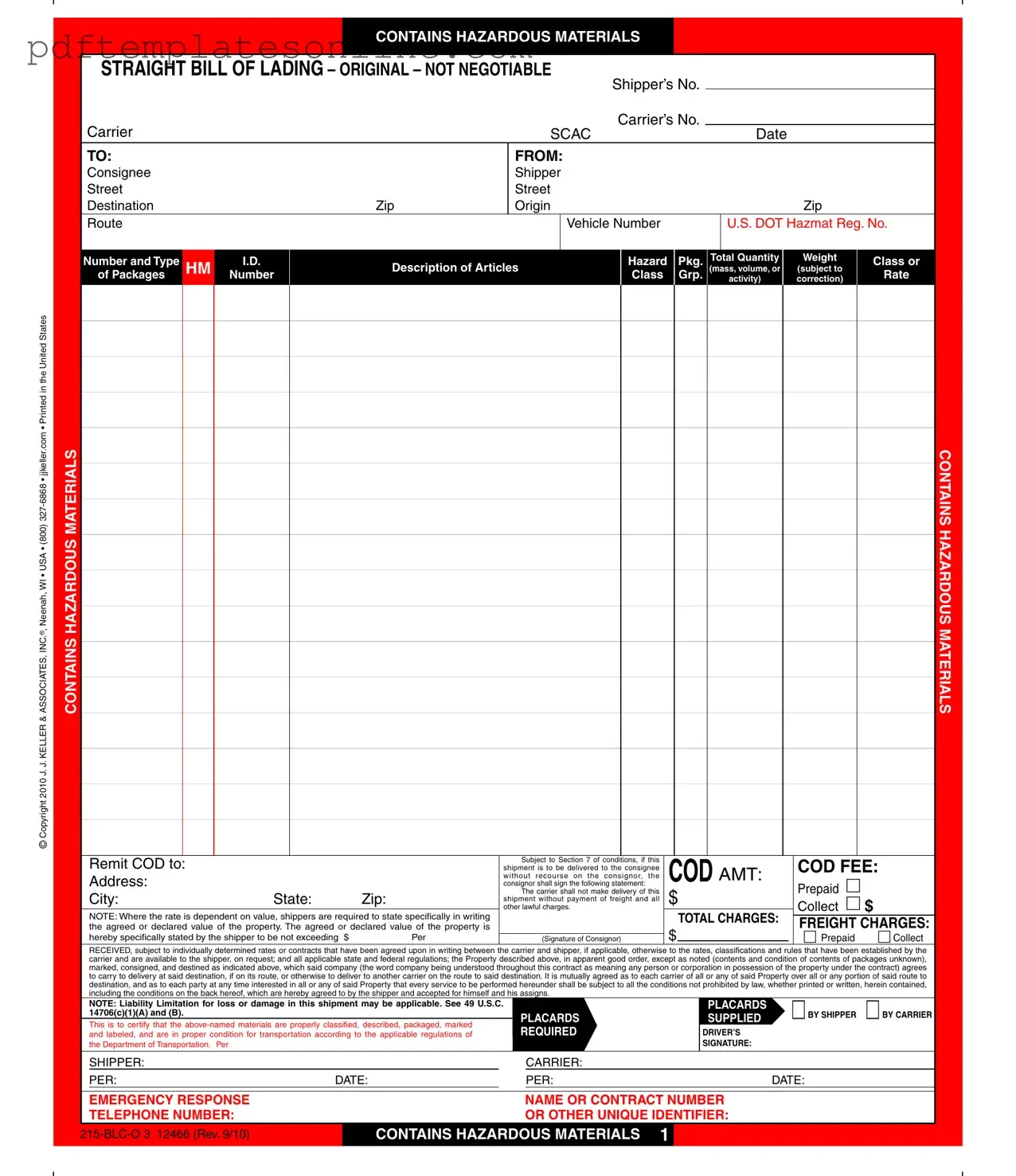Filling out the Hazard Bill of Lading form is crucial for the safe and legal transport of hazardous materials. However, many individuals make common mistakes that can lead to delays or legal issues. Understanding these pitfalls can help ensure a smoother process.
One frequent error is failing to accurately describe the hazardous materials being shipped. The description of articles section must be precise. Incomplete or vague descriptions can lead to misclassification, potentially resulting in fines or safety hazards during transport. Always double-check this section to ensure it matches the materials being shipped.
Another mistake involves incorrect weight or quantity declarations. The total quantity and weight of the packages must be accurate. Underestimating or overestimating these figures can cause logistical problems and affect shipping costs. It’s essential to weigh the packages and count them carefully before filling out the form.
People also often overlook the importance of signatures. The signature of the consignor is a legal acknowledgment of the information provided. Without it, the bill of lading may be considered invalid. Ensure that all required signatures are present and correctly placed on the form.
Another common issue arises from miscalculating freight charges. Shippers must be aware of the total charges and any applicable fees. Failure to accurately calculate these can lead to disputes and delays in delivery. Always review the terms and conditions regarding freight charges before submitting the form.
Additionally, some individuals neglect to check for the necessary placards. The form requires that hazardous materials be properly labeled. If the placards are not supplied or displayed correctly, this can lead to safety violations. Always confirm that the appropriate placards are included and visible on the shipment.
Lastly, individuals sometimes forget to include emergency response information. This is critical for the safe handling of hazardous materials in case of an incident. Providing a telephone number or other unique identifier for emergency response ensures that help can be reached quickly if needed. Always include this information to enhance safety during transport.
By avoiding these common mistakes, shippers can facilitate a smoother process when completing the Hazard Bill of Lading form. Attention to detail is essential for compliance and safety in the transportation of hazardous materials.
